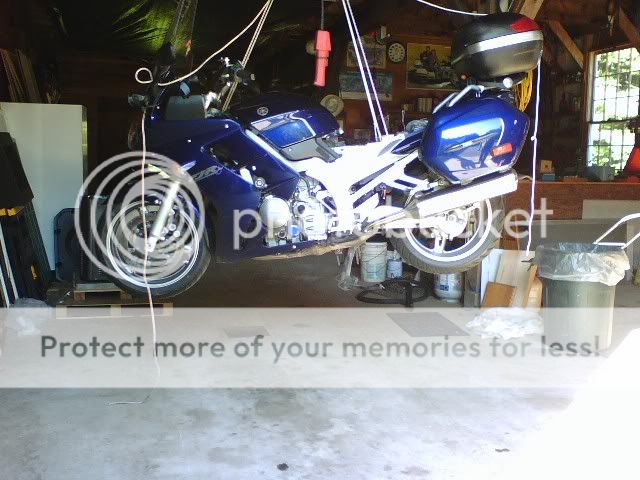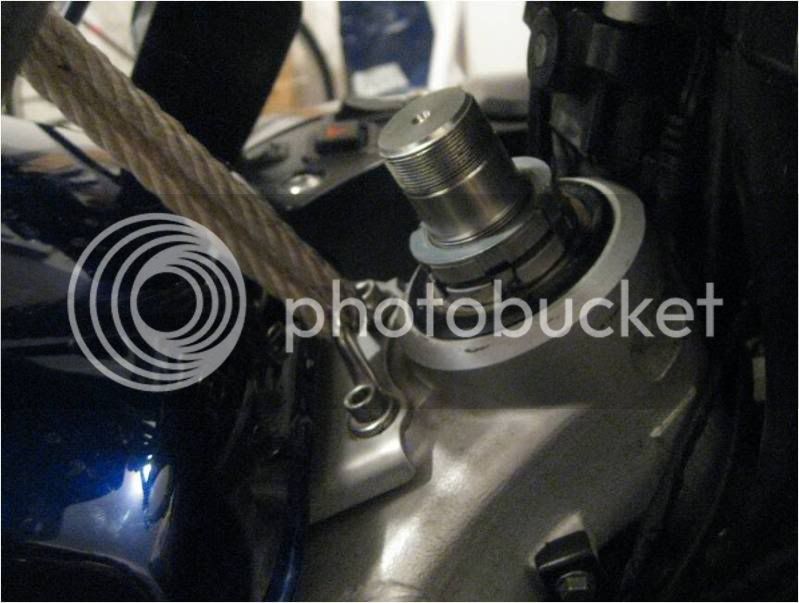Breathless
Active member
Last autumn I had my '06 in the dealership for the grounding recall. That required removal of the gas tank. When I attempted last week to remove the gas tank for install of aux wiring, one of the pretty allen drive button-head bolts at the tank front was frozen. It's supposed to be tightened to 10 neuton-meters (about 7-1/2 ft-lbs) and I believe antiseize should've been used - it was not. I applied penetrating oil and a hammer-whack three times daily for three days. Then I attempted removal again. With two people, one ensuring the drive didn't migrate up out of the allen socket and the other turning the torque wrench (I used that 'cause I was curious how tight the bolt was), we turned it. At twenty some-odd ft-lbs the drive stripped out the bolt head. Shit! I'm not a big fan of HeliCoils and they don't even exist in this bolt size. What to do?
The answer turned out to be pretty simple. Maybe I'm just ignorant, but on the off chance y'all don't know about this I'll share it. A neighbor put me in touch with a welder friend. Using stainless steel welding rod, he welded a steel rod to the bolt head. Before trying to turn the steel rod and while the bolt was still hot he applied some beeswax, allowing it to melt down into the threads. Voila, out comes the bolt with no thread damage resulting.
I don't recall seeing anything in the shop manual about using antiseize where SS bolts go into aluminum (both of which oxidize which leads to galling) so maybe I am mistaken about it. Comments?
The answer turned out to be pretty simple. Maybe I'm just ignorant, but on the off chance y'all don't know about this I'll share it. A neighbor put me in touch with a welder friend. Using stainless steel welding rod, he welded a steel rod to the bolt head. Before trying to turn the steel rod and while the bolt was still hot he applied some beeswax, allowing it to melt down into the threads. Voila, out comes the bolt with no thread damage resulting.
I don't recall seeing anything in the shop manual about using antiseize where SS bolts go into aluminum (both of which oxidize which leads to galling) so maybe I am mistaken about it. Comments?





